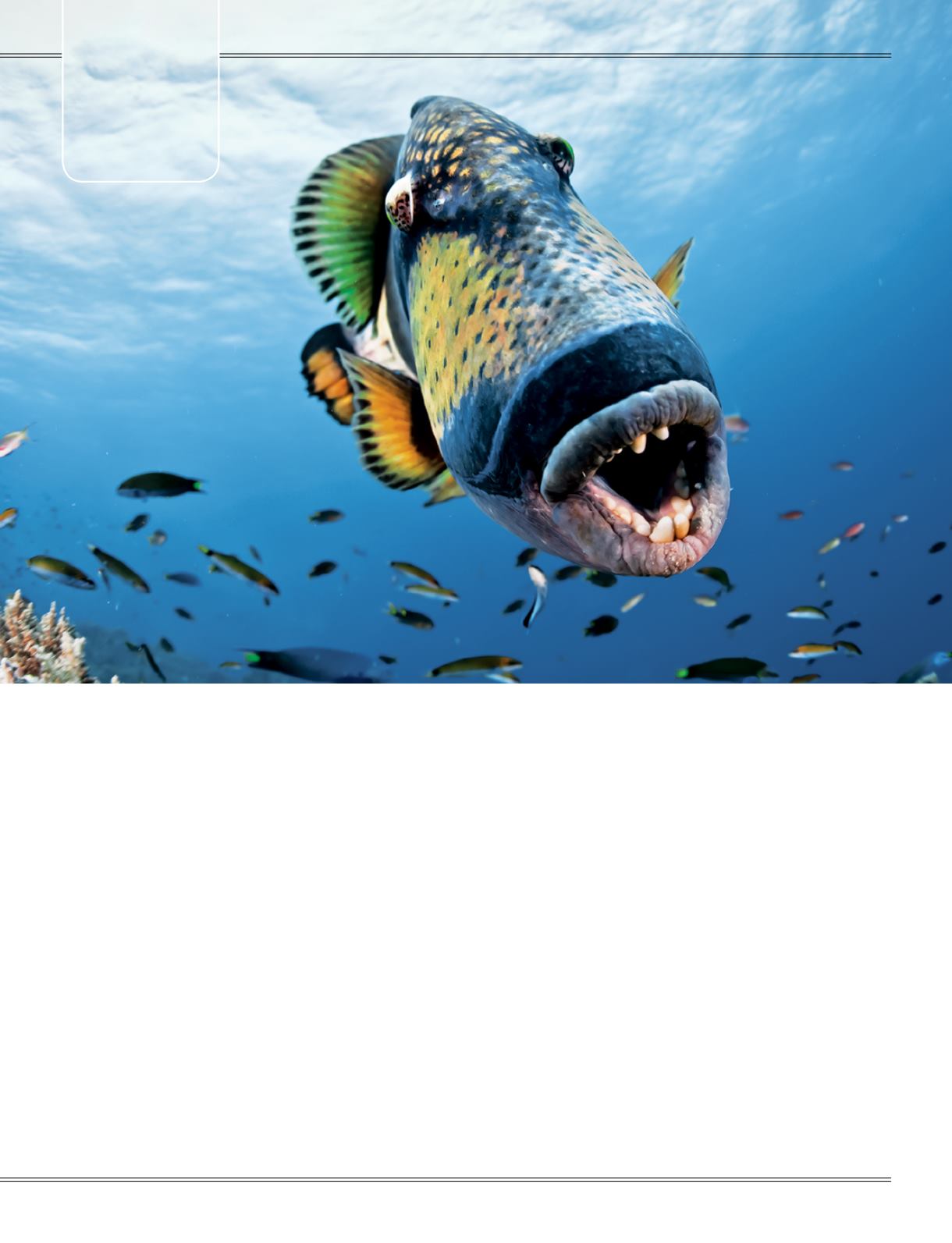
|
83
and dolphins. But for those willing to travel to places where
regulations are more lax, the rewards of marine-mammal
interactions are great. In Mexico, the Galapagos Islands and
South Australia, among other places, sea lions can be inquisitive
and playful. Some sea lions will seek interaction with waterborne
humans by gently biting a diver’s fins or wetsuit hood or by
swimming dizzying loops and barrel rolls around a diver.
If one travels to one of the few places where swimming
with whales and dolphins is permitted, then the opportunity
for truly magical experiences is a distinct possibility. In the
Kingdom of Tonga, for example, it is legal to swim with
humpback whales when with a licensed operation and in
the company of a licensed guide. Humpback whales migrate
from Antarctica each year to mate and calve in the tropical
waters of the South Pacific. The whale season is four months
long, and during that time a newborn whale calf learns about
the world around it as it grows an inch and 100 pounds each
day on its mother’s rich milk, gaining strength for the long
journey back to Antarctic waters at the season’s end. During
this time each mother keeps watch over its baby but grants
the young whale a bit of leeway to explore the new world.
Calves can be inquisitive and will leave the protection of
their mothers to investigate strange things, and to a newborn
whale there are probably few things stranger than human
beings snorkeling in rolling seas. As the snorkelers are
clumsy, so too are the humpback calves just learning how to
swim and dive and breach.
If one is lucky, while floating next to a 45-foot humpback
whale mother with her calf tucked beneath the shadow of
her body, her great eye will fixate upon your intent gaze
across a few yards of open water, and you will instantly
comprehend that you have made eye contact. A shudder,
a tingle, a frisson may accompany the realization. There is
no way of knowing what the whale is thinking, but there
must be a glint of recognition — an acknowledgement of
a kindred species. This recognition found in the eye of any
animal connects us to the natural world from which we have
become increasingly alienated. When a marine mammal
initiates an interaction with a person, there is an effect — a
cross-species connection — even if it lasts only moments.
When an animal with intelligence different from our own,
living in a world so unlike ours, willingly overcomes its fight-
or-flight instinct and draws in for a closer look at strange
human animals in an aquatic environment in which they are
ill-equipped to survive, then one thing is certain: The animal
is the observer, and the effect they are having is on us.
AD
Territorial females such
as this titan triggerfish
may guard their egg
nests aggressively
against all comers.


